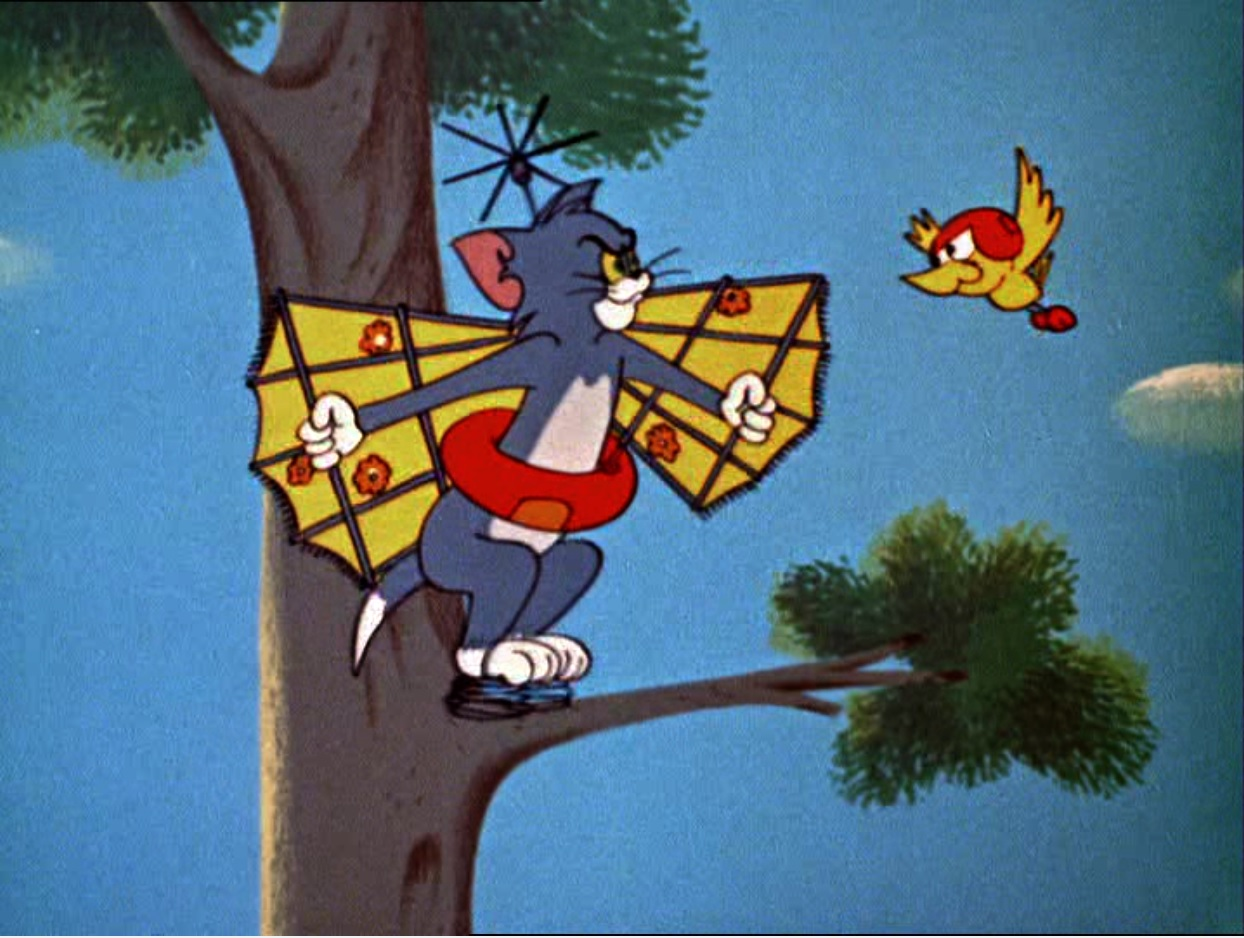
After the last few Tom and Jerry shorts were simply spot gag cartoons with little story, this film gives the cat and mouse more of a story than just a cat chasing a mouse.
As this short film starts, Tom is getting the better of Jerry for once. However, seeing Jerry's plight, his fairy godmother appears and gives him a potion to turn invisible. Jerry uses this to get revenge on Tom.
This is a decent cartoon. Like many of the Chuck Jones directed Tom and Jerry shorts, the highlight is the character animation. The best scene is easily Jerry interacting with the fairy godmother. Jerry's pantomime of his encounter with Tom is delightful and the evil smile (which resembles that of the Grinch in Chuck Jones' 1966 TV special) on both characters is the only really funny moment in the film. Unfortunately, as great as this scene works, the rest of the cartoon has a been there done that quality to it. Jerry has turned invisible before in The Invisible Mouse (1947) and The Vanishing Duck (1958). Unfortunately, both those films simply have better gags that are more creative, clever and funny than what we have here. Also, despite being the same length of most Tom and Jerry cartoons, this film feels too short and not enough actually happens. When the ending comes there is a feeling of "shouldn't there be more?"
The credited animators on this film are Ben Washam, Ken Harris, Don Towsley, Tom Ray and Dick Thompson. The story is credited to Chuck Jones and Don Towsley. This is the only story credit for Don Towsley that I am aware of. Towsley was a former Disney animator having worked on many classic cartoon shorts as well as feature films like Pinocchio (1940) and Fantasia (1940). He would animate on many of the Chuck Jones Tom and Jerry shorts as well as How the Grinch Stole Christmas (1966). Towsley's television work included being on a director on such animated shows as Fraidy Cat, Wacky and Packy, The New Adventures of Gilligan, The New Adventures of Batman and The New Archie/Sabrina Hour. Eugene Poddany receives a music credit. Maurice Noble gets a co-director credit. The credited background artist is Robert Gribbroek. The credited voice artists are Mel Blanc and June Foray. This is the 140th Tom and Jerry theatrical short.
The title of this cartoon is a reference to the 1915 novel Of Human Bondage, which had by this time already had three Hollywood feature film adaptions, one in 1934, one in 1946 and one in 1964.
This film is available on the DVD sets, Tom and Jerry: Classic Collection Volume 6, Tom and Jerry: The Chuck Jones Collection, Tom and Jerry: Fur Flying Adventures - Volume 2 and Tom and Jerry's Magical Misadventures. It can also be seen on the LaserDisc set, The Art of Tom & Jerry: Volume III: The Chuck Jones Cartoons and the VHS set Tom and Jerry: Cat and Dupli-cat. The film is included as a bonus feature on the Blu-ray for the Elvis Presley movie, Harum Scarum (1965).
-Michael J. Ruhland


























.jpg)








